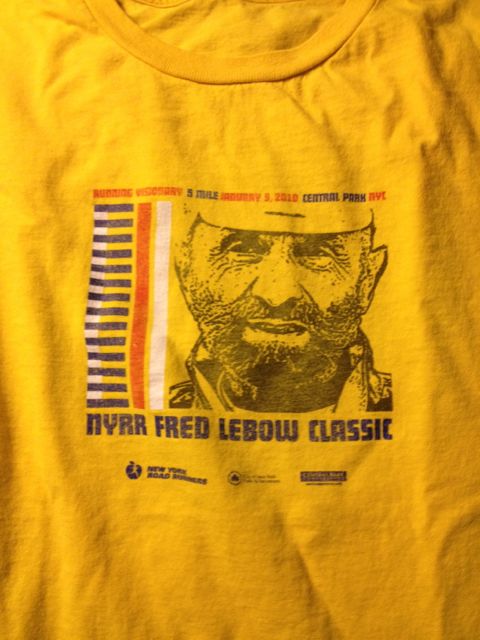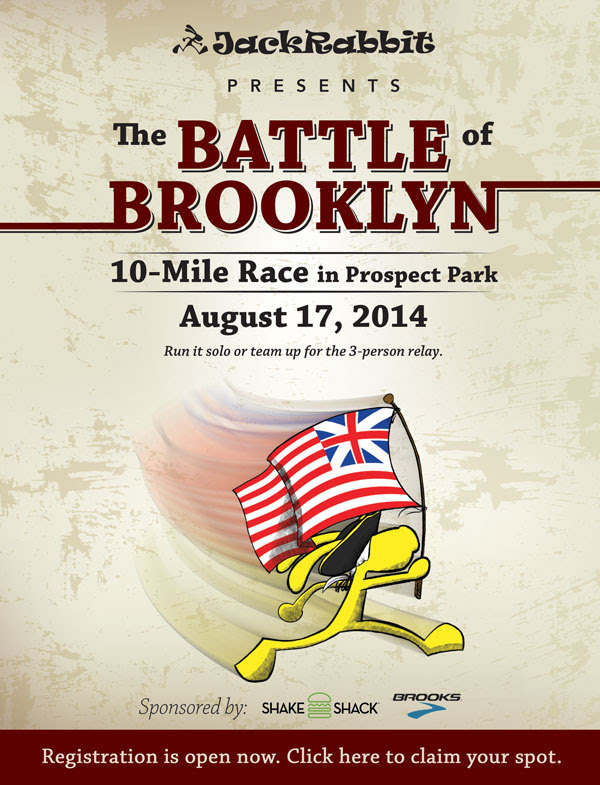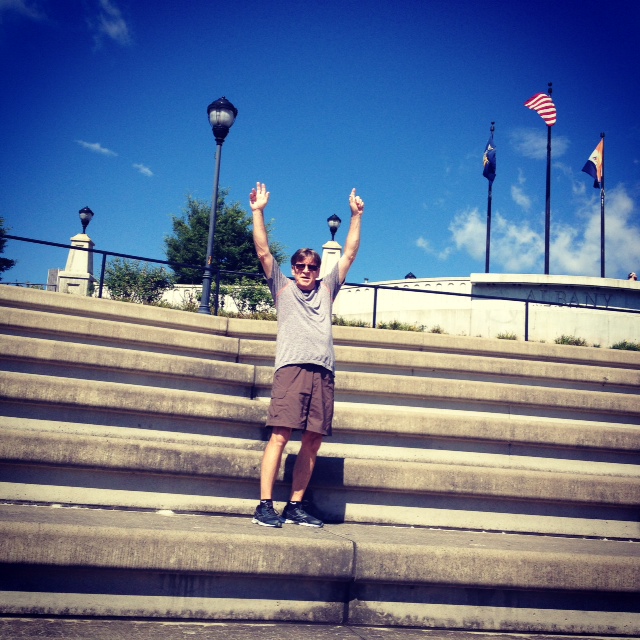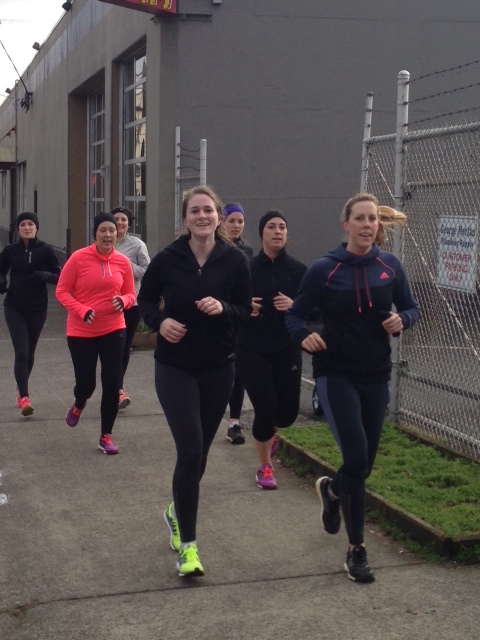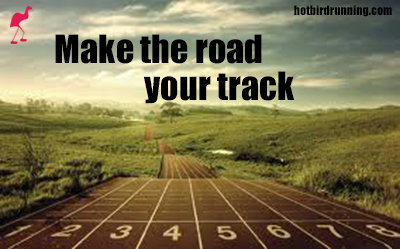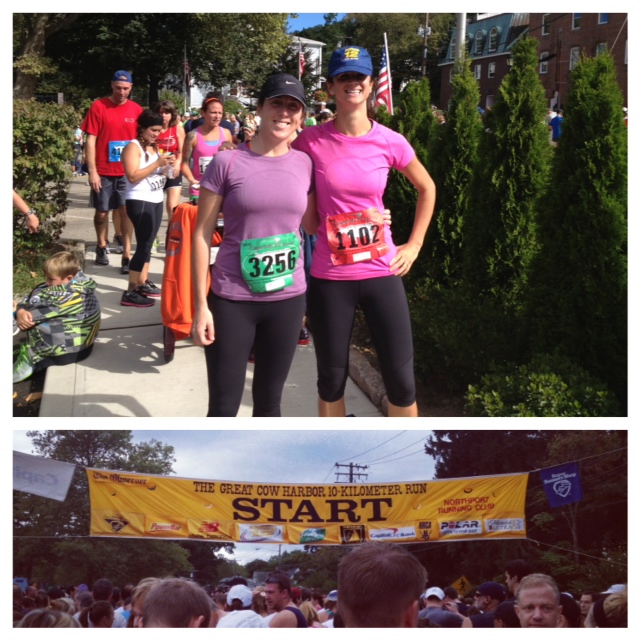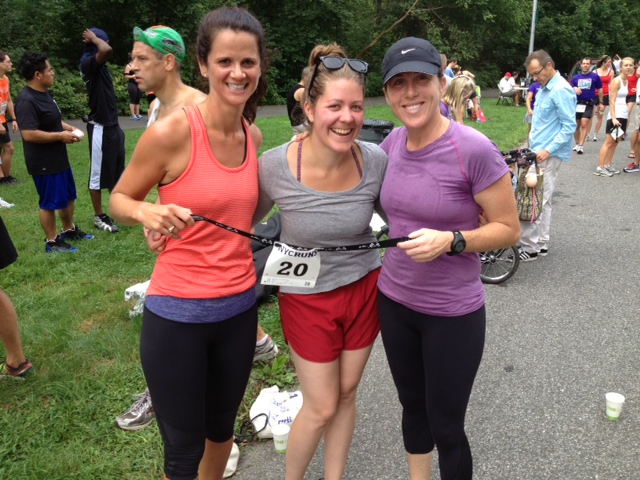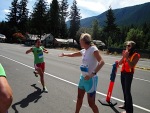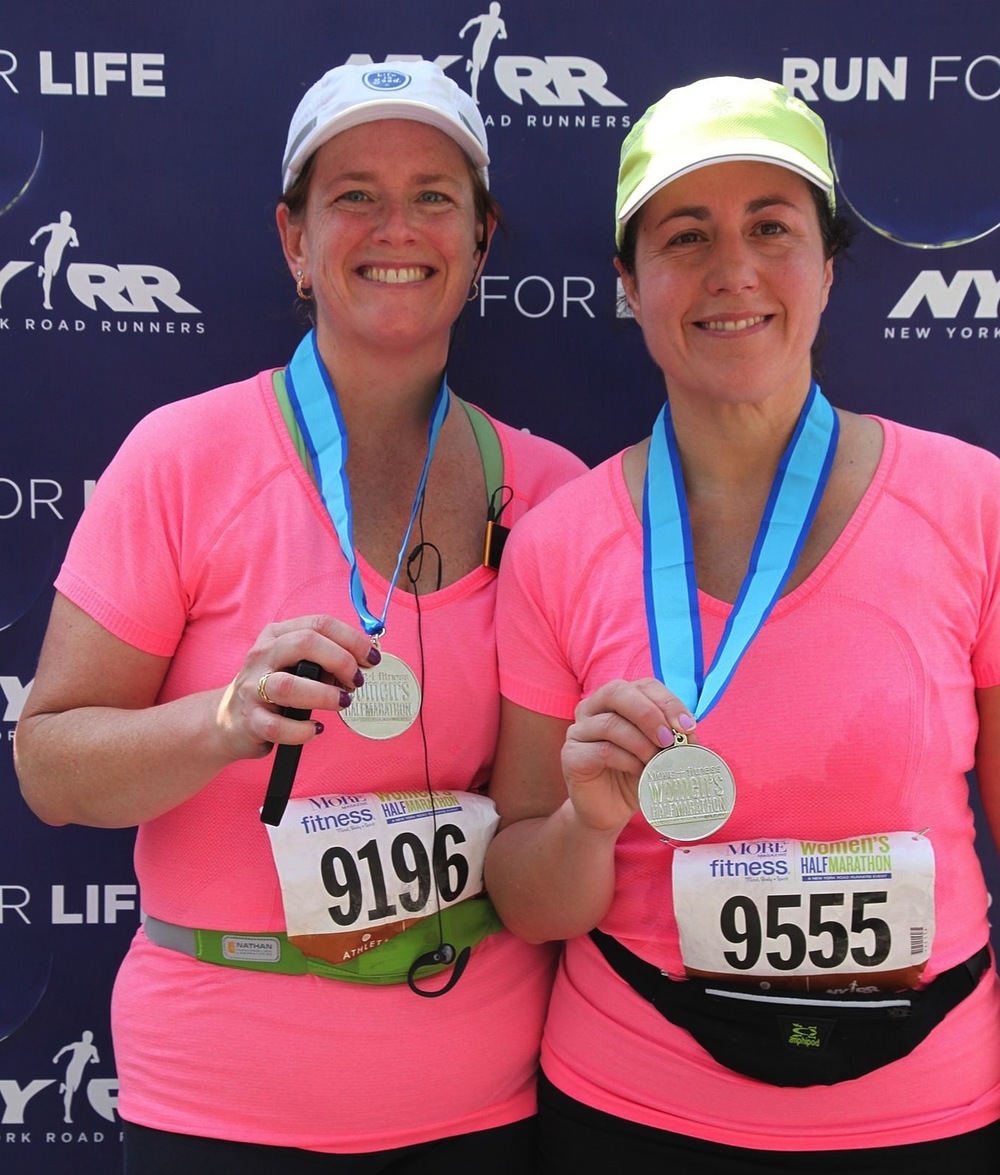What can we say about Rob? He's funny, witty, convinced an awesome girl to marry him, runs, is really good at stick figure drawings and oh, likes to complain about things. He lives in Tribeca NY and plans to get famous via the internet. He's a recovering lawyer who tutors High School kids. He's a 3 time NYC Marathon deferrer - we are getting him to run it this year - look out 2013! Check out his blog and Facebook page for insights and laughs.
How do you know us - Hot Bird Running?
I own a BBQ Chicken establishment in Brooklyn, NY. Every day, Meghan and Jessica run by and wave. I thought we were friends. In 2010, they stole the name of my business and used it as their own. I recently initiated a high stakes law suit to bar them from diluting the "Hot Bird" brand.
OK, fine. I went to Hamilton College with them. (note from the Hot Birds - and he thinks our biz name is VERY clever!)
What are your current running goals? Are you training for anything?
A HORRIBLE toe injury put me on the shelf for several months. It happened during a yoga class. I'd share pictures with you, but I put them on facebook and a lot of people flipped out. Apparently feet pictures are a "thing" for some people (not in a good way).
Now that I have recovered enough to run with only mild pain, my running goals are:
a) Run at least 2 days per week;
b) Increase to 3 days per week after I complete goal "a" once; and
c) Run the NYC Marathon (I’m now a three time deferrer). I just can’t get over how hot it gets in August. I sweat a lot. Everyone’s all like “Oh, you just have to run at 5 am. It’s not so hot then. Yeah, it’s not so hot, but it’s 5 am. That’s insane. No one does that. Plus, it’s still hot. And 18 miles is really far.
Who or what inspires you to run?
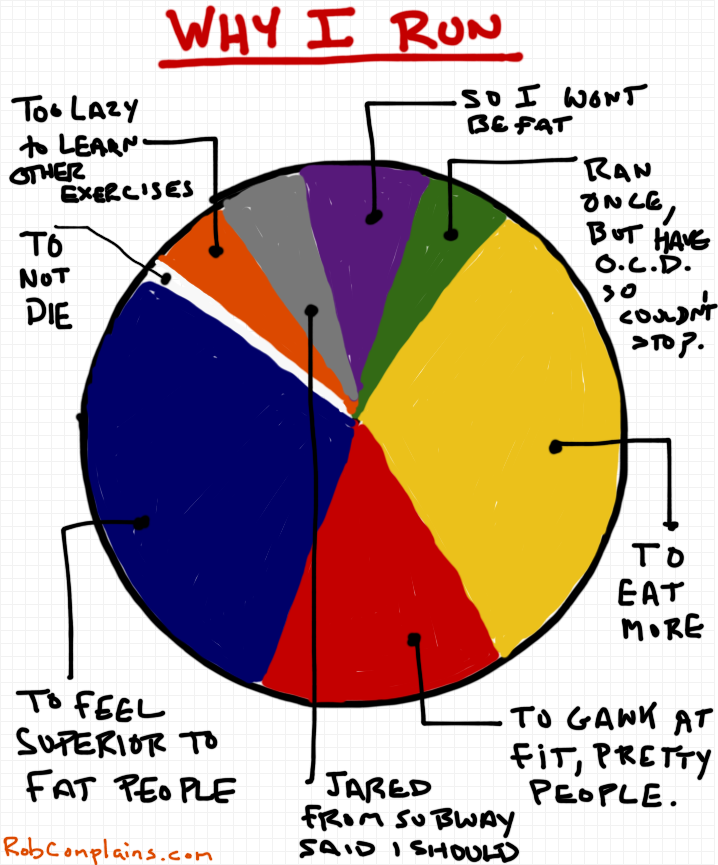
What is your favorite running route/place to run?
The bagel run I do every weekend morning.
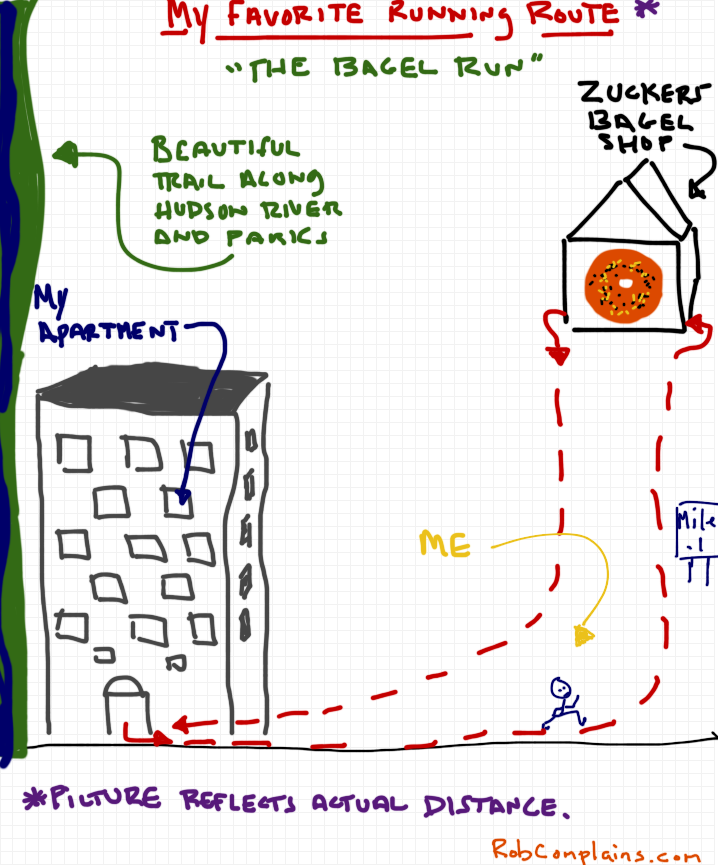 Who is your favorite person to run with and why?
Who is your favorite person to run with and why?
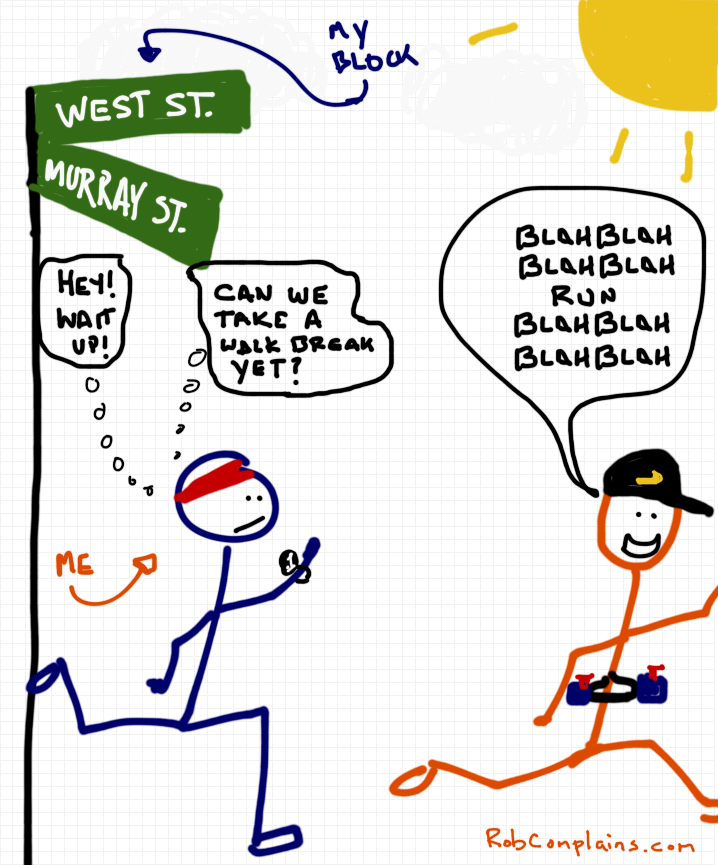 I love to run with other people. So if I picked a specific favorite, I'd have to deal with “how come you don’t like running with me the most??????” conversations. I don’t want that.
I love to run with other people. So if I picked a specific favorite, I'd have to deal with “how come you don’t like running with me the most??????” conversations. I don’t want that.
Instead, here is a list of characteristics of my ideal running buddy, taken from actual traits that I admire in runners.
An ideal running partner:
- Talks A LOT. Like non-stop.
If I have to do the talking, then I get winded too fast. Then I get tired and want to stop. So I like to run with someone who does all the talking for me. Like a live podcast.
One friend literally recounts stories from the New Yorker to me on long runs. Why is that great? Because every one else hates reading the New Yorker and doesn’t have the patience to slog through a whole 30-page article. When a friend takes the time to read it, AND remember the fun details, AND tell them to me like a little story, I almost forget how hot I am on mile 2. It’s like running with Malcolm Gladwell.
- Is faster than I am, but only a smidge.
If your friend is too fast, then you feel like an ass for ruining their run. If they are way slower than you are, then you get antsy. So the ideal running partner runs a little faster, but not so fast that you have to tug the back of her shirt when she pulls ahead.
Running with someone faster means that sometimes I get tired and huffy puffy and bitch a lot. But it also means that when we train together, I’m forced to work harder than I probably want to, which isn't a bad thing and gives me plenty to complain about at the time.
- Doesn’t let me stop when I want to.
I warn everyone up front that I'm going to complain a lot. The best running partners tolerate my complaints, but do nothing to accomodate them.
Like when we're running and there's a big hill, I’d be all, “this is hard, I don’t want to go up that hill, I’m tired, Running is stupid, can’t we just stop, I hate you, why did you make me do this, it’s 5 am in the morning and August, I’m sweating so much, did my heart just stop beating? I think it did, do I look pale? Why aren’t you sweating?”
The ideal running partner just says, "Shut up, Rob."
Then I shut up and berate my running partner in my head. When I finish my imaginary rant, we’d be at the top of the hill and I’d say, “That was easy.” We'd laugh. Then I’d collapse and an ambulance would pick me up. It was fun for everyone.
- Is organized and motivated.
I won't negotiate how far we’re going to run, what time we’re going to run, or where we’re going to run. But if someone else has a plan, I'll just do it. It's especially helpful when someone else puts together a calendar and emails it to me.
But the best running partners never cancel. Once someone cancels, then it's allowed. I try to come up with any excuse I can muster to get out of a run if I'm feeling lazy. If the other person has never canceled on me, then I know I can't cancel because I'll get in trouble. However, once there's been a cancellation, it becomes allowed and expected. Like stopping at a water table during a race. If you go by the first ten tables without stopping, you don't think about water. Once you stop and drink and your legs take a break and realize how magical it feels to stop and rest, then ever water station becomes a little panacea of awesomeness.
- Carries one of those idiotic looking fanny backs with water.
My friend Jess does this. I didn't want to mention names, but she wears one of those tool belt things and it looks ridiculous and I mock her for it relentlessly. Goddamnit, though, I love that thing when I'm thirsty and she lets me have a sip.
What is the best piece of running advice you ever received and who was it from?
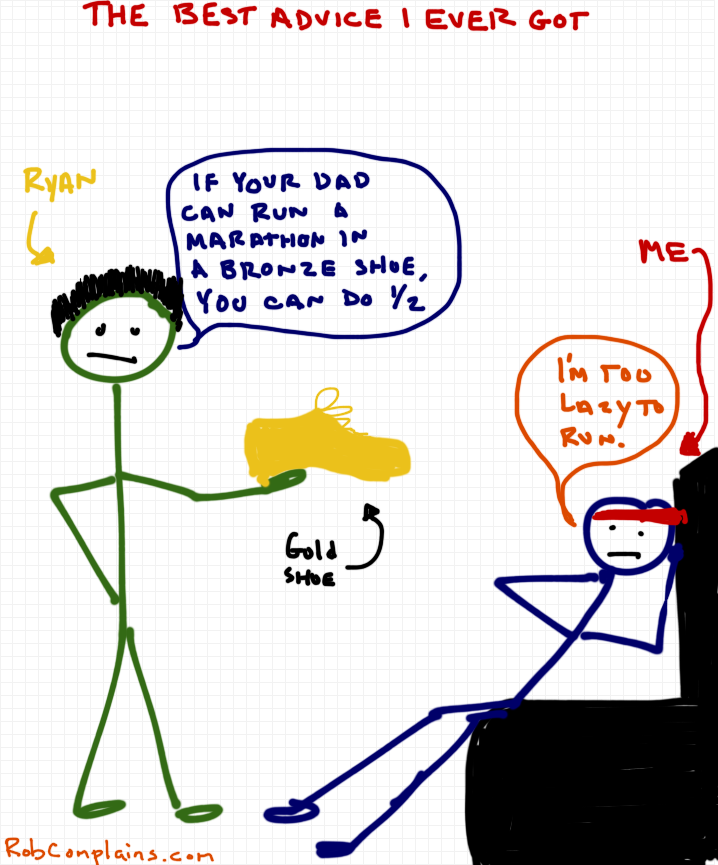 In 1980, my dad ran the NYC Marathon in 3hr 19min (suck it, Meghan). I was two. To commemorate my dad's race, my mom bronzed one of his disgusting, smelly sneakers. My friends thought it was stupid to have a golden shoe in the living room.
In 1980, my dad ran the NYC Marathon in 3hr 19min (suck it, Meghan). I was two. To commemorate my dad's race, my mom bronzed one of his disgusting, smelly sneakers. My friends thought it was stupid to have a golden shoe in the living room.
So when I first started running, and was feeling particularly lazy and unmotivated, my good friend Ryan said, “Hey, if your dad can run a marathon in that heavy bronze shoe, you can do half in those shitty Brooks. So I did.
What is your favorite running gear/piece of clothing?
Body Glide. Second favorite is this hideous yellow Fred LeBow shirt (the combination of the mustard yellow and the face picture is a real winner):